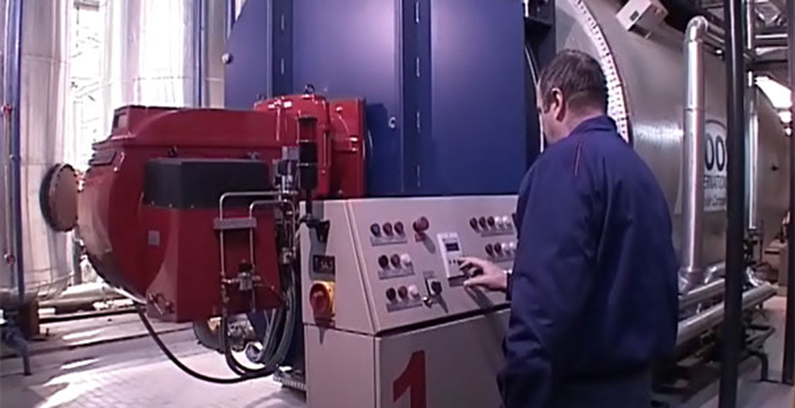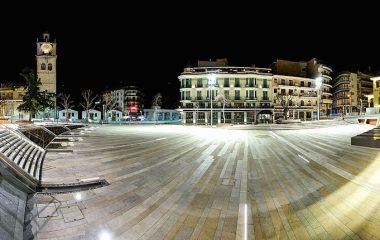
Slika: CoolHeating
The University of Belgrade School of Electrical Engineering (ETF), together with partners on the CoolHeating project, has completed pre-feasibility studies for two investment projects concerning small modular renewable district heating systems in the City of Šabac: the Summer House – biomass use in suburban areas and the New District Heating Plant – biomass use in urban areas.
About CoolHeating project
The project goal is to support the development of the market for small modular renewable heating and cooling systems in cities and municipalities of South-East Europe (SEE). This goal will be achieved through the transfer of knowledge and joint activities of partners from countries with good practice examples (Austria, Denmark, and Germany) and countries with modest development in this sector (Croatia, Slovenia, Macedonia, Bosnia and Herzegovina, and Serbia).
Bringing projects of small modular renewable district heating and cooling systems in five selected cities and municipalities to the pre-investment phase would be the final outcome. Project activities are taking place in several cities and municipalities in the region of SEE: the City of Ozalj (Croatia), the Ljutomer Municipality (Slovenia), the Visoko Municipality (Bosnia and Herzegovina), the Municipality of Karpoš (Macedonia), and the City of Šabac (Serbia).
What are small modular renewable district heating and cooling systems?
Small modular renewable district heating and cooling systems are based on a variety of energy sources, including solar collectors, biomass, and waste energy (for example, from industrial processes or a biogas plant). The solar energy and biomass mix is interesting as it provides security of supply, price stability, local economic development, and employment in rural areas.
On the other hand, this mix is attractive because there is no fuel in solar energy, and biomass can be stored and used during the winter months when there is less solar energy. Having this in mind, the warehouse is the most important part of the heating system. An increase of the variable renewable energy sources share is accompanied by the conversion of electricity into a heat using heat pumps, which secures an additional source of flexibility for such systems connected to the electricity system.
Summer House
The Summer House project consists of a 1,500 kW biomass boiler, 3,500 kW fuel oil boiler, with a total production of 4,274 MWh of heat, and a buffer storage tank with a capacity of 60 cubic meters. It is planned to connect about 250 new customers to a newly constructed distribution heating network with a length of about 7,656 meters.
The total investment costs are about RSD 250 million, with the participation of various stakeholders:
– residents, through investments of legal entities and individuals in the amount of RSD 43.6 million, and through the payment of the connection fee of RSD 59,000 to RSD 590,000 with the options of consumers gaining ownership and the establishment of an energy cooperative,
– municipalities as a regulator and by providing a guarantee for a loan in the amount of EUR 1.4 million, and
– grants provided at the national level in the amount of RSD 14.7 million.
The average annual price of about RSD 120,000 for the average household is needed to achieve a minimum profitability of the project and an internal rate of return of 8.76%. The contracts would be signed for a period of at least 15 years (2019-2033), which is suitable having in mind the repayment period of the investment (9.05 years). The socio-economic benefits include the increased quality of life thanks to cleaner air, improved comfort, and the creation of economic opportunities at the local level by avoiding RSD 40 million in annual economic losses from forest cutting and using quality biomass in an inefficient way.
New District Heating Plant
The New District Heating Plant project comprises three new 4.5 MW biomass boilers, existing natural gas boilers of up to 35 MW, with a total production of about 62,000 MWh of heat, and a buffer storage tank with a capacity of 200 cubic meters. It is not necessary to connect new customers (around 7,500 individual consumers are already on the grid), nor to build a distribution network, but it is necessary to extend it, in the length of 2,240 meters. The total investment costs are around RSD 850 million, with the participation of various stakeholders:
– private investor, financier, through investments of about RSD 260 million,
– municipalities through providing a guarantee for the loan in the amount of RSD 590 million, and
– the national regulator by granting the necessary approvals.
The price of heat was determined on the basis of a reduced average annual price for an average household of about RSD 50,000 on the basis of a 10-year contract (2019-2029), maintaining a very attractive internal rate of return on investment of 37% and a very short repayment period (2.69 years).
The socio-economic benefits, in addition to reduced energy prices for citizens, are the reduction of CO2 emissions by 7,540 tonnes and increased energy security due to reduced dependence on natural gas imports, while saving RSD 188 million per year.
Also, the local economic development will benefit from biomass storage that covers up to 90 days of annual consumption, which amounts to 13,000 tonnes, establishing a RSD 1 million biomass market at a regional level. In addition, economic activity in the biomass supply sector would be galvanized.
Energy transition in the district heating sector
Dr Ilija Batas Bjelić, a research associate at ETF involved in the studies, says that from the very beginning of the project there was a dilemma whether to go for a smaller suburban facility, and start the project from scratch for the first time in Serbia, or to try to solve the project task at the level of the district heating company, which Serbia has 66.
“But in the end, we opted for both and prepared pre-feasibility studies. Now we need to work together with all stakeholders, citizens, municipalities, potential investors, contractors, banks, and equipment manufacturers to sign binding letters of intent and to prepare tenders for the implementation of these investments. Successful implementation will be decisive for the overall course of energy transition in the district heating sector of Serbia,” he noted.









Be the first one to comment on this article.